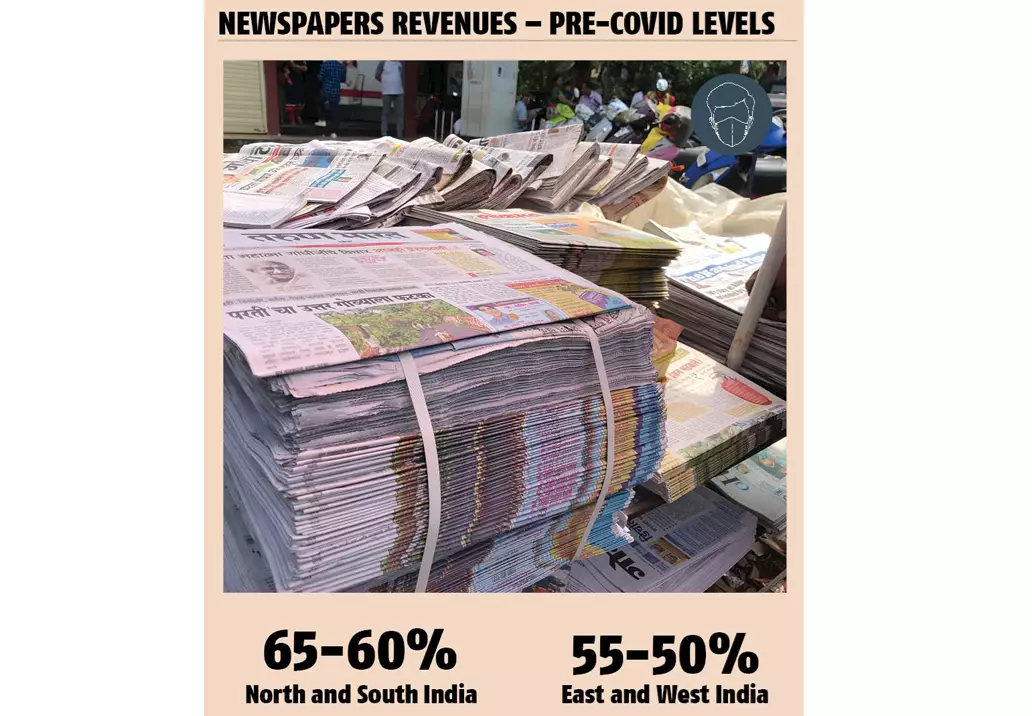Spotlight: Malayala Manorama and Dainik Bhaskar
We spoke to George Jacob, executive director at Malayala Manorama. He says, “In Kerala, the Government was proactive about print being genuine news instead of the stuff on the digital media, so there were no restrictions on distributing the newspapers or magazines. Some apartment buildings did disallow distribution within their premises, but it was short-lived as the residents needed their daily news.”
20 Sep 2021 | By PrintWeek Team
Malayala Manorama created videos about printing, packaging and the distribution process. This was for the benefit of those who doubted the safety of newspapers, even as word of mouth by its distribution representatives conveyed that infections through a printed newspaper were minimal, which it was till protocols were relaxed after the first lockdown. “We retightened these protocols when infections were within our premises, but that was only for two weeks,” said Jacob.
The Kottayam-headquartered newspaper’s circulation was down by 2-lakh copies, but Jacob said, the graph is rising again, albeit slowly. So, what’s the future of newspapers in Kerala? Jacob says that it’s what the world trends are, and Kerala’s newspaper sector will follow the same pattern but in different time periods. “What happened in the West will happen here too. The only question is the timing. Newspapers across the world are trying all kinds of strategies to retain print subscribers, and I am sure Kerala or India will be no different.”
The Times of India, which ran – The Power of Print – campaign, declared that it published a blockbuster edition on India’s 75th Independence Day, including a special feature – Leaders of Change. The newspaper produced 1,400 unique pages across the publication, and over 17-crore pages were printed on 15 August 2021. (Source: TOI, Goa edition, 17 August 2021).

The Dainik Bhaskar Group displayed tremendous resilience in the face of the second wave of Covid-19. With the learnings from the first wave, a carefully calibrated editorial and circulation strategy meant that the disruptions were localised and minimal. More importantly, the pace at which operations regained normalcy upon easing of restrictions highlights the planning and strategic steps taken by the group over the past year. The company said the circulation registered almost 300-bps growth on a y-o-y basis in Q4FY21, enabling the group to reach more than 90% of pre-Covid circulation numbers. The onground calibrations done by local teams have helped Dainik Bhaskar achieve almost 95% of pre-Covid levels in select cities and towns. The recoveries have been significant in the key states of Madhya Pradesh, Rajasthan, Gujarat.
To attract advertisers and to maintain brand loyalty, Dainik Bhaskar Group also introduced an innovative campaign of printing ‘mega issues’ of its newspapers in different cities. In recent examples, Dainik Bhaskar commemorated its 25 years with a 120-page Foundation Day issue in Jodhpur and celebrated 15 years of its operation in Bhilwara, Rajasthan, with a 204-page mega issue.
PrintWeek's assessment
Things are looking bet ter now. But newspapers in India are more distribution chal lenged than demand challenged.
Also read:
Has Covid altered Indian print forever?
Packaging: a voice of sanity
Corrugation and label industry: hopes for post-pandemic demand
Wide-format industry: sluggish growth
Insights on the next six months for print
Vox Populi: Industry's take on pandemic blues












 See All
See All